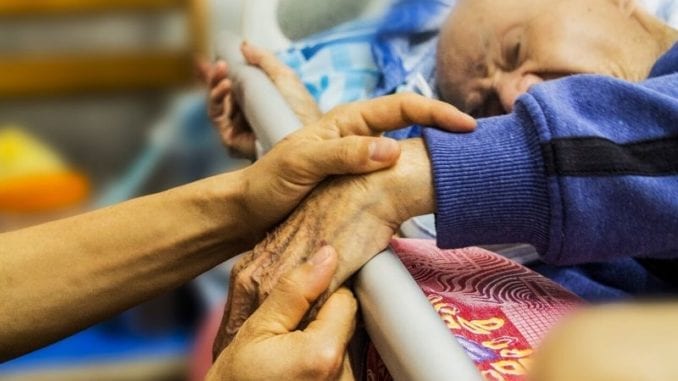
By John Muscedere and Russell Williams
The COVID-19 pandemic has made it clear that Canada needs to change the way we care for our older adults. We have failed in our duty to safeguard the most vulnerable members of our society.
The Canadian military’s report on deplorable conditions found in long-term care homes and media reports on incidents of serious neglect at long-term care facilities where residents were found dehydrated and malnourished, wandering the halls and unkept in soiled diapers and bed linens, horrified Canadians.
These tragedies are a sad wakeup call that we are headed down the wrong path for aging in this country.
As a society, we have been successful at extending the life span, but we have not found a way to ensure that older adults are living their best lives as they grow older. Rather, we have seen an increasing number of Canadians aging with reduced function and poor quality of life. These people are more likely to be admitted into long-term care.
Canada’s population is now rapidly aging and the first of the ‘baby boomers’ will turn 75 years old in 2021. Without mitigation efforts, the demand for long-term care will exceed supply and the ability of our already stretched health care system will faulter.
We need a different approach.
First, federal, provincial, and territorial governments must ensure adequate funding and enact standards of care in long-term care homes that protect the health and safety of our vulnerable seniors and the people who care for them. This is, however, a short-term solution that will not be viable for long.
To ensure a sustainable system, we must create a strategy designed to enable healthy ageing and thereby flatten the demand curve for long-term care. This whole of government public health approach would focus on maintaining function with aging, preserving quality of life, and delaying the development of frailty in older Canadians.
Frailty is a medical condition that increases vulnerability and results in loss of function across many bodily systems in older individuals. For those living with frailty, minor infections and illnesses can have a dramatic impact, resulting in higher chances of serious health deterioration, death, and the need for institutionalization such as long-term care.
One in four older Canadians over the age of 65 — and one in every two over the age of 85 — are frail. Frailty is even more prevalent in First Nations communities. Approximately 50 per cent of First Nations People over 65 years are living with frailty, double the national average.
Despite these high percentages, we treat the development of frailty and loss of function with aging as an inevitability without providing adequate investment and attention to preventive interventions, which not only worsens quality of life in older Canadians but also puts immense strain on our health and social care systems. As a result, 45 per cent of health care spending is on those over age of 65, even though they represent only 15 per cent of the population.
As the number of Canadians over 65 continues to grow, there is an urgent need to embark on a long-term visionary strategy that aims to prevent or mitigate the development of chronic diseases, loss of function and frailty.
We recommend an integrated strategy which include all levels of government, designed to enable healthy aging. This strategy should include age-friendly community interventions at the municipal level. It should stress a public heath approach, focusing on the maintenance of bodily function and avoidance of frailty, promoting activity, appropriate nutrition, reduction of social isolation and preventive health maintenance.
We also need the development of better home care services and community supports designed to help keep older Canadians living at home with dignity and quality of life for as long as possible, mitigating the need to increase long-term care beds and the warehousing of older Canadians living with frailty.
We also need to identify and implement more effective mechanisms to both better train and better support family and friend caregivers who frequently find themselves becoming “partners in care.”
Finally, we need to identify populations developing or at greater risk of frailty so that resources can be targeted to enable healthy aging and avoid the need for long term care. This would require availability of real-time frailty population data for public health planning. For Indigenous Peoples, this includes frailty-sensitive healthcare and social services developed in partnership with them.
The changing demographics of our society require bold, visionary efforts that would lay the foundation for generational change.
Dr. John Muscedere is the Scientific Director and CEO of the Canadian Frailty Network (CFN), a professor in the School of Medicine at Queen’s University and an intensivist at Kingston Health Sciences Centre.
Russell Williams is Chair of the Board of Directors at CFN, and the President at Diabetes Canada.


